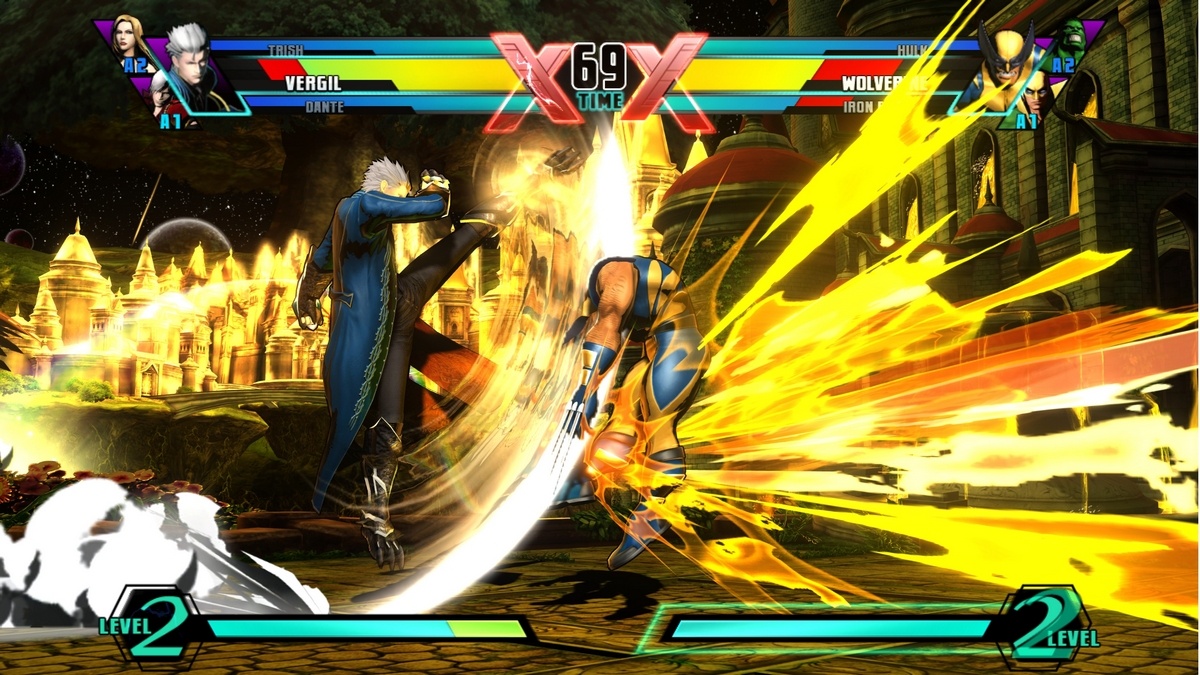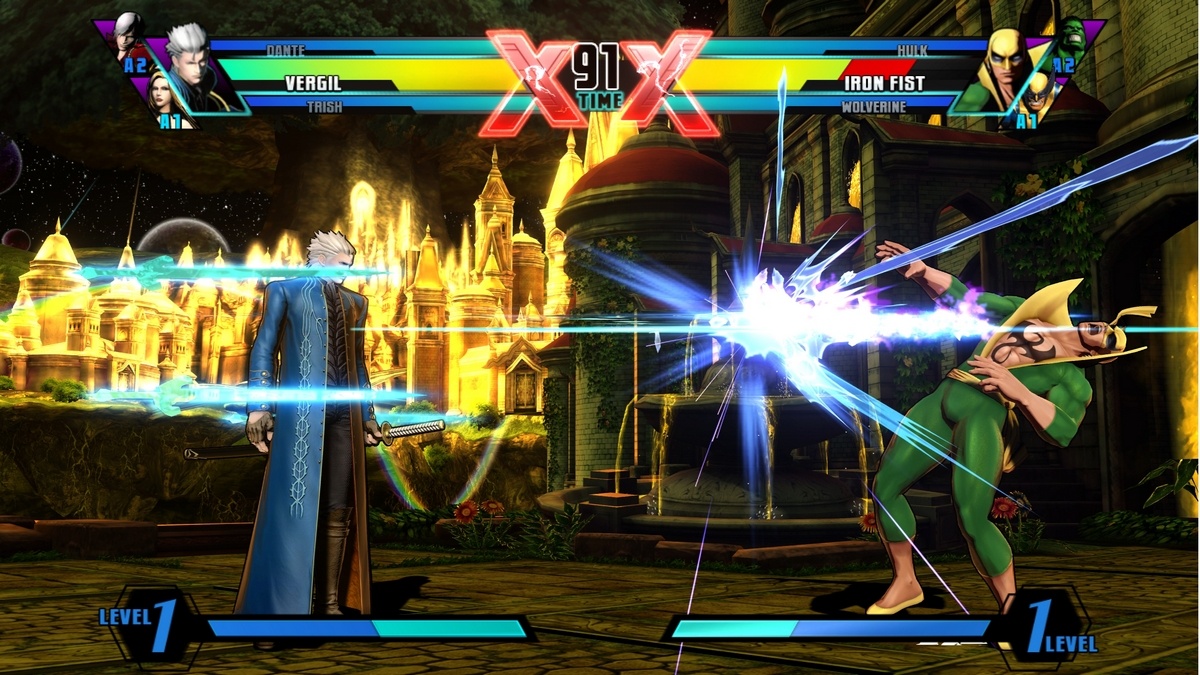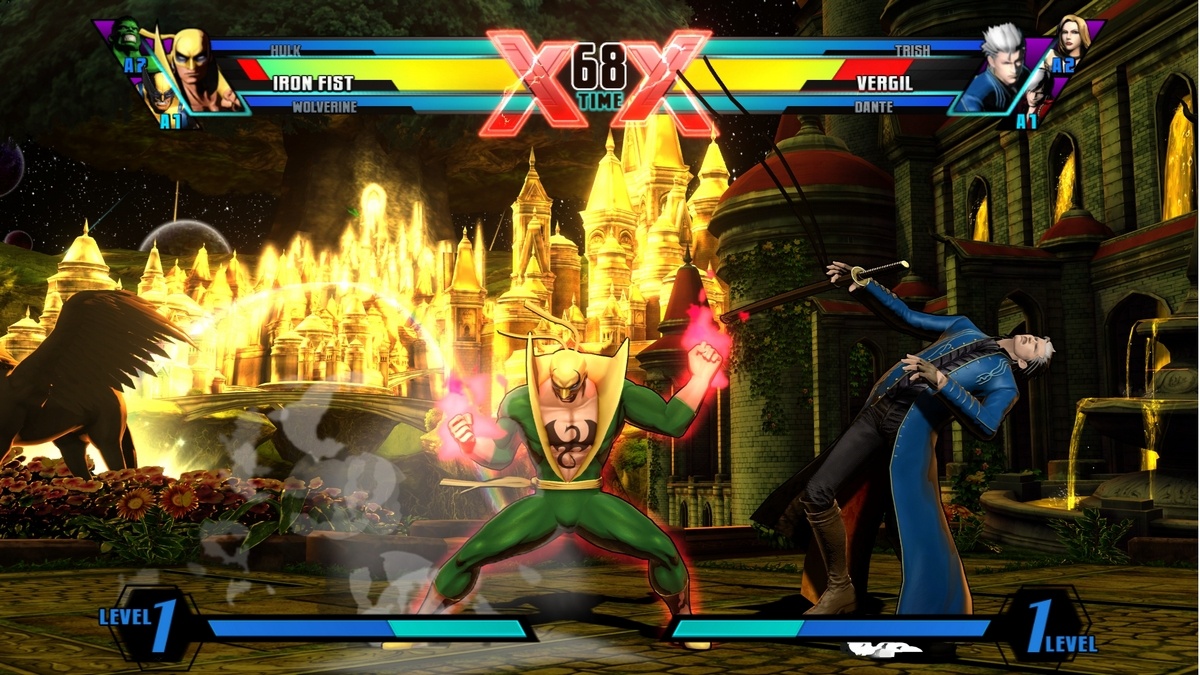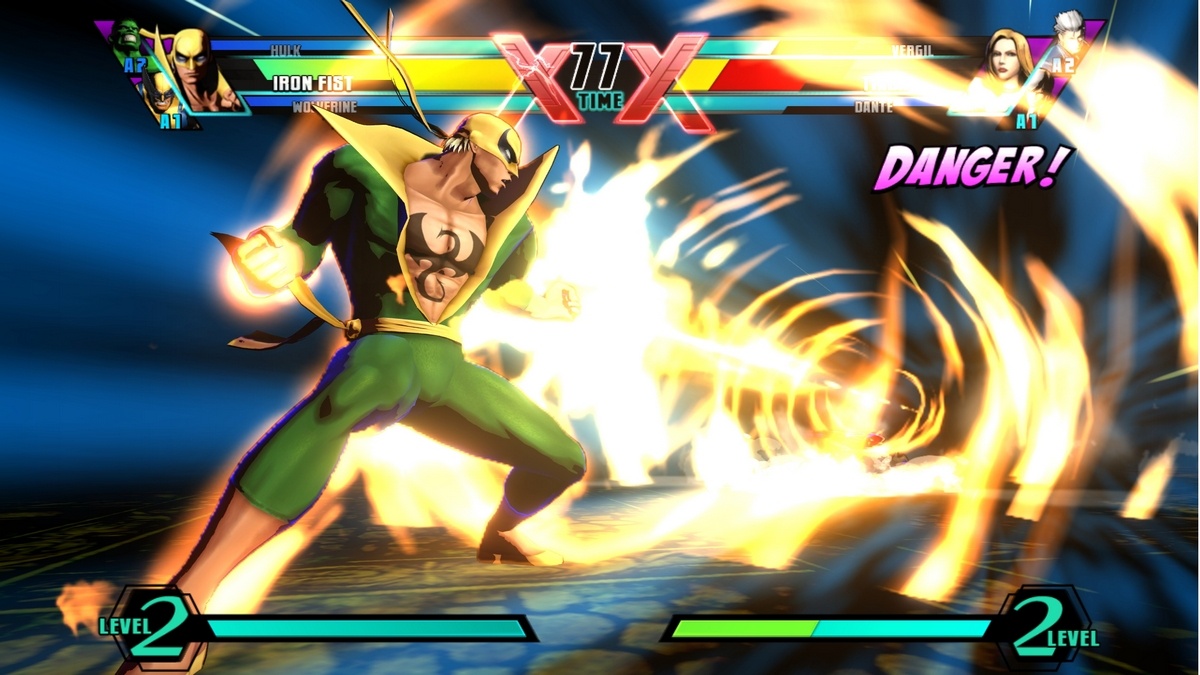TGS 2011: Ultimate Marvel vs. Capcom 3 Preview - Vergil and Iron Fist
We break down Vergil and Iron Fist alongside Capcom's Seth Killian at this year's Tokyo Game Show.
Two newcomers have thrown their hats into the Ultimate Marvel vs. Capcom 3 ring. Vergil, the sinister brother of demon-hunter Dante, joins Capcom's ranks alongside Strider, Firebrand, and Nemesis. On the Marvel side, the immortal Iron Fist teams up with Ghost Rider, Dr. Strange, and Hawkeye. We got the chance to try both alongside Capcom special adviser Seth Killian at this year's Tokyo Game Show--starting with Vergil.
Another Crab's Treasure Is A Soulslike 3D Platformer | GameSpot Review Stellar Blade Review Super Monkey Ball Banana Rumble - Official Multiplayer Features Trailer Nintendo 64 – April 2024 Game Updates – Nintendo Switch Online PUBG | Erangel Classic Returns Gori: Cuddly Carnage | Meow Launch Date Announcement Trailer Genshin Impact - "Arlecchino: Afterglow of Calamity" | Collected Miscellany Marvel Rivals - Official Loki Character Reveal Trailer | The King of Yggsgard Fortnite Festival - Official Billie Eilish Cinematic Season 3 Trailer Remnant 2 - The Forgotten Kingdom | DLC Launch Trailer Stellar Blade - Official "The Journey: Part 2" Behind The Scenes Trailer | PS5 Games Dead by Daylight | Tome 19: Splendor | Reveal Trailer
Please enter your date of birth to view this video
By clicking 'enter', you agree to GameSpot's
Terms of Use and Privacy Policy
Normals
Vergil seemed to have a bit of Karas' blood in his veins from Tatsunoko vs. Capcom: Ultimate All-Stars. His normal attacks, in particular his heavy and launcher attacks, all had massive range. Using these moves we could easily start a combo from mid-screen or simply keep our opponent at a distance.
His command normals included an uppercut that would pick enemies off the ground. However, its recovery was too long for us to combo afterward with normal attacks. We later learned that if we canceled that recovery animation with a teleport we could follow up with Maximum Vergil (more on that move later).
Two other command normals we found were very similar to some of Dante's. These included a downward sword slam that would pull Vergil out of the air and a diagonally downward-striking kick that would bounce the opponent off the ground for a follow-up attack.
Specials
Judgment Cut: This attack pulled Vergil back on command a short distance before creating a circle of cutting either near, medium, or far away--similar to Dormammu's Black Hole attacks. We found this attack was best used to pull ourselves out of range of incoming strikes before countering with cuts.
Rising Sun: The light version of this attack launched Vergil into the air to perform a jumping kick twice at a forward angle--like Yun's dragon kicks from Street Fighter. Vergil could also teleport-cancel out of this attack. The medium version spun him through the air in an arc and would bounce the opponent off the ground for a follow-up attack. Finally, the hard version had Vergil dash across the screen (through the opponent) before creating a wave of cutting in his wake that would draw the enemy toward him.
Trick: It was a teleport. And unlike his brother, Dante, Vergil could position himself in front of, behind, or above the enemy.

Hyper Combos
Maximum Vergil: This was not the official name for this attack, but it's what we're calling it. Similar to the other maximum attacks, it struck full screen and could easily fit into any hyper combo chain. And since it blanketed the screen with slashes, it seemed even easier to connect than Maximum Wesker.
Spiral Swords: The real magic of Vergil, this attack created a ring of swords that would orbit him for roughly four seconds and damage enemies they came into contact with. Not only that, but we could reposition the swords so that they hovered around us and shot forward like projectiles (either on command or independently after a few seconds), or we could have them follow above the opponent's head and fire down onto him.
Devil Trigger: The only new move Vergil received in this form was an air dash. However, all his specials were improved with bigger hit boxes and faster executions. Using Devil Trigger was also the only way to access his level-three hyper combo, which was similar in execution to Dante's (a forward-hitting sword dash). Of course, the level three still required three bars of meter, as well as one to activate Devil Trigger.
Assists
Vergil's three assist moves were the light version of his Judgment Cut, his Yun-inspired jumping kicks, and his dash-and-cut special. We preferred the Judgment Cut since it would hold the opponent in place for half a second and since the jumping kicks don't have invulnerability on startup (this isn't Vanilla, after all). His third assist, in addition to hitting a large area, also pulled the opponent away.

Overall
Like fellow newcomer Nemesis, Vergil was a straightforward character that we were able to pick up and start having fun with without much trouble. His far-reaching normals make him a threat from almost any distance, while his flexible Spiral Swords hyper combo lends him some much-needed versatility. Click ahead to see our thoughts, and Seth Killian's breakdown, on Marvel's Iron Fist.
Normals
While Vergil focused on slapping people from across the screen, Iron Fist was all about running up and punching foes in the face. A lot of his command normals let him slide forward across the screen, which helped to compensate for his otherwise limited range. Another was a palm strike that, while it didn't crumple the opponent, did cause a lot of stun and could be easily followed up with a launcher or hyper combo.
Another Crab's Treasure Is A Soulslike 3D Platformer | GameSpot Review Stellar Blade Review Super Monkey Ball Banana Rumble - Official Multiplayer Features Trailer Nintendo 64 – April 2024 Game Updates – Nintendo Switch Online PUBG | Erangel Classic Returns Gori: Cuddly Carnage | Meow Launch Date Announcement Trailer Genshin Impact - "Arlecchino: Afterglow of Calamity" | Collected Miscellany Marvel Rivals - Official Loki Character Reveal Trailer | The King of Yggsgard Fortnite Festival - Official Billie Eilish Cinematic Season 3 Trailer Remnant 2 - The Forgotten Kingdom | DLC Launch Trailer Stellar Blade - Official "The Journey: Part 2" Behind The Scenes Trailer | PS5 Games Dead by Daylight | Tome 19: Splendor | Reveal Trailer
Please enter your date of birth to view this video
By clicking 'enter', you agree to GameSpot's
Terms of Use and Privacy Policy
Specials
Iron Fist's two sets of offensive specials had unique names, so we'll just refer to them as Fireball and Reverse Fireball, since those are their input types.
Fireball: The light version was a short-range dash punch. The medium version was a very short-range body blow that would put the opponent into a crumple state. The heavy version was a long-range dash punch that knocked the opponent down without a bounce.
Reverse Fireball: These three moves were a short-range, low-hitting kick; an overhead axe kick that would pick opponents up off the ground; and a flying twin kick (also similar to Yun's).
While none of these moves seemed impressive on their own, save for the axe kick and the body blow, we could link three of them together to create different attack combinations. We could start out by striking low and then going for the axe kick if the opponent was blocking low, or we could stop short at only two hits and go for a throw.
There were also two new moves using the launcher button--an upward flaming kick and a shoulder slam--that could be performed only as the third hit in a combo string. Both of these attacks caused wall bounce.
Chi: Iron Fist had three chi boosts he could apply to himself. The light version (red) was a power bonus to improve his strength. The medium version (blue) was a defensive bonus. And the heavy version (green) let him slowly regenerate his special meter. Each boost lasted roughly five seconds and could be (briefly) stacked onto itself for a more potent boost.

Hyper Combos
Iron Rage: This barrage of punches came out quick and made an excellent counter if our opponent missed a hit, or as a follow-up to the body blow attack in a combo string.
Volcanic Roar: This area-of-effect hyper was good for catching enemies after landing an axe kick or a wall bounce. However, it did not pick enemies up off the ground.
Iron Fist's level-three hyper combo was a close-range strike that dealt high damage at close range.
Assists
Iron Fist's three assist moves were Dragon's Touch (body blow), Crescent Heel (axe kick), and Rising Fang (flying twin kick). As always, having an assist that picks the opponent up off the ground is a great asset, but we got more use out of the body blow move. Peppering it into another character's combo string let us build some nasty tricks. And since Iron Fist appeared at the same spot as the character, we could sometimes catch overly aggressive attackers while defending against their blows.
Overall
Fans of Fei Long will find themselves right at home with the fiery Iron Fist. While having almost no ranged attacks, this close-quarters fighter could lay down a lot of hurt once he got up close.
It's also worth noting that aerial crossover attacks have been tweaked in UMVC3. Performing a downward aerial exchange now gives you one level of meter, a side exchange removes one level of meter from your opponent, and an upward exchange does more damage. The counter timing has also been tightened, so you won't be able to spam your way out of an exchange.

With the inclusion of these new characters, only four characters remain unrevealed: Frank West, Nova, Rocket Raccoon, and Phoenix Wright. We'll be sure to keep you updated as Ultimate Marvel vs. Capcom 3 approaches its November 15 release date on the Xbox 360, PlayStation 3, and Vita.
Got a news tip or want to contact us directly? Email news@gamespot.com
Join the conversation